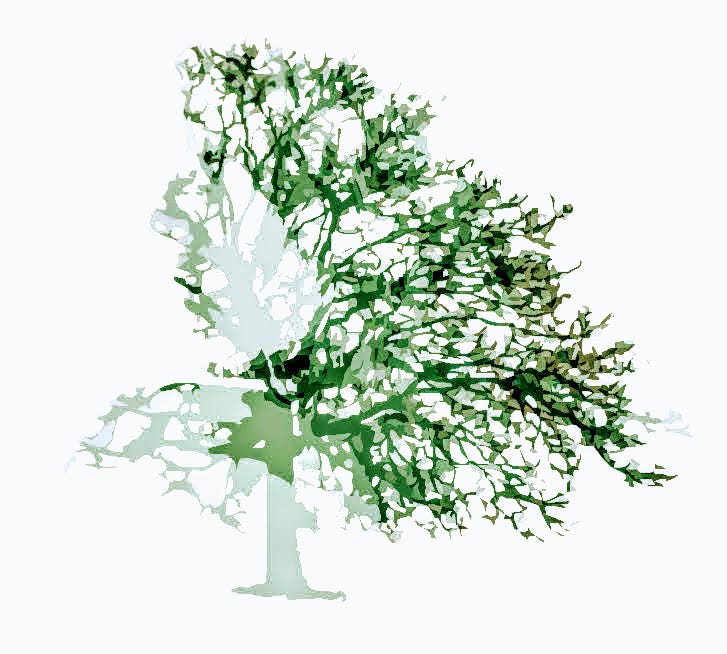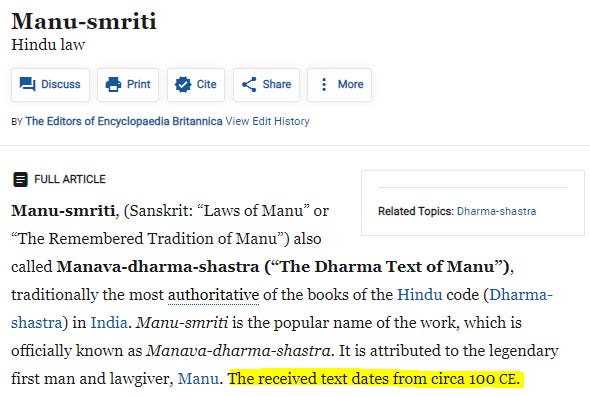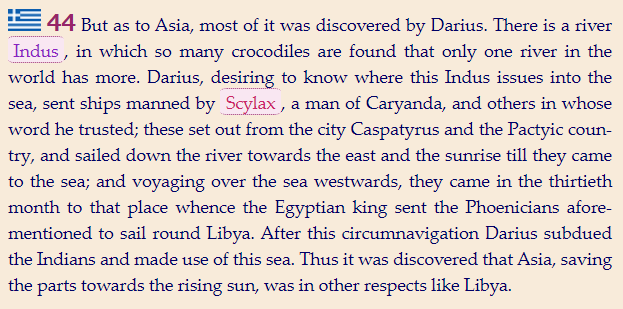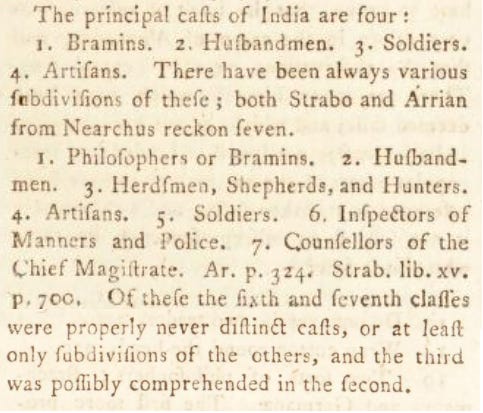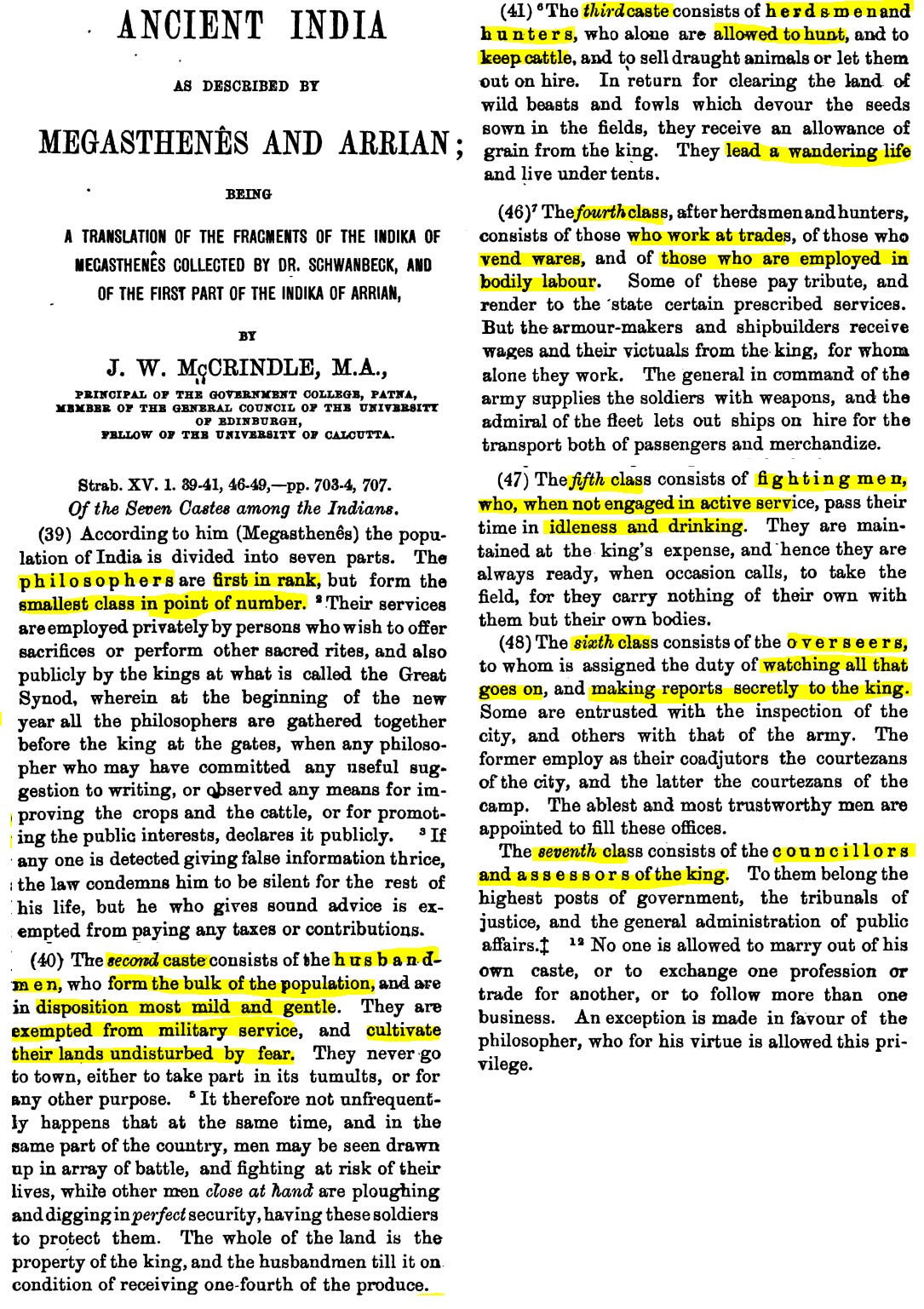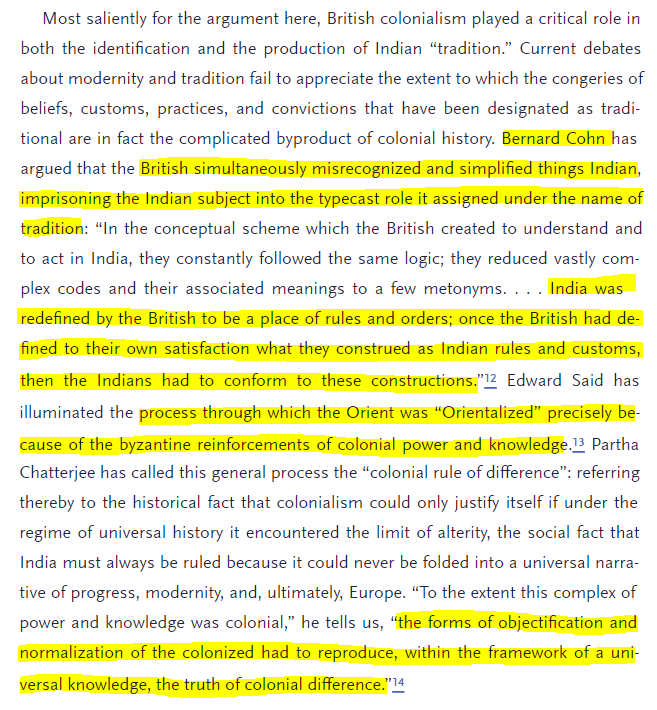Insightful newsletter of Drishtikone: Issue #316 - Unpacking Caste System - 1
We are being defined and cast in a way and every word, every narrative we consume reinforces that. It is not merely an analytical observation anymore, it is tool of power. Caste System. A series.
Image by Anastasia Makarevich from Pixabay
“I have gained this by philosophy; I do without being ordered what some are constrained to do by their fear of the law.” ― Aristotle
The only way reductionist Monotheist mindset can win over the pluralist Polytheist ways is to characterize the diversity of the latter as divisions.
When a garden that has a yellow rose, a white gardenia, a red hibiscus, and blue hydrangea is made to suffer that diversity of color, something truly ugly unfolds.
The One World order.
The hatred of a monotheist of the many gods, the many beliefs, the many ways is really the hatred of a garden by one who has known only a desert. It is a power struggle first and an urge for domination that leads one to such an endeavor.
Is it not imperative in such a situation for the pluralist to stand up and bat for the diversity that defines a garden and push back on the attempt to add ugliness in the situation by creating and perpetuating schisms?
Caste System is held as synonymous with Hinduism. That is the colonial project. Of the power past and present. They have a narrative, an idiom and a structure to enforce that on us. It was facilitated in large part by how power was distributed and perpetrated during the colonial era to reinforce the defined divisions. Even after independence, the parties which played their power politics based on castes were merely extending the colonial project.
For most of the caste system enthusiasts, Manusmriti is the fountainhead of the whole idea of castes and how they stack up.
In today’s edition, let us look at the disconnects of history and its interpretation.
Manusmriti and contemporary disconnects
The seriousness, accuracy, and ‘convergence’ of historians with respect to chronology can be easily gauged from the range and evidence they use to assign the dates to Manusmṛti. It goes from anywhere around 1250 BCE to 200 CE.
The Brittanica Encyclopedia then goes on to give another date with an equally authoritative zeal of an evangelist. 100CE. How? Why?
The bio of the person who edited this page on the Encyclopedia apparently suggests his rather disconnected credentials to understand the text as well as its chronology.
Matt Stefon was a religion editor at Encyclopaedia Britannica. He earned B.A. degrees in English and American studies from the Pennsylvania State University and an M.A. in religion and literature and an M.T.S. in philosophy, theology, and ethics (comparative religious ethics) from Boston University, where he also completed coursework toward a doctorate in comparative theology and American religious history.
American religious history of 200 years sure does prepare a person to understand the nuances of a culture that was largely based on spoken traditions where most of the works were not written down until very late.
But for what it’s worth, let us take the date for Manusmriti to be somewhere between 200 BCE and 200 CE.
Were there any other accounts of that time in India, that could be commensurate with the claims made by these historians, their bad interpretations of Manu’s work notwithstanding?
Well, the first accounts of India in Western writings come from Scylax. Scylax of Caryanda was a sailor employed by the Persian king Darius I who wrote in Greek. Darius sent Scylax to explore the areas around and beyond the Indus river. His works do not survive but they have been quoted and used by later historians.
The Greek historian Herodotus of Halicarnassus wrote about India in his book Histories (Chapter III) In book 4, section 44, Herodotus discusses the work done by Scylax.
Scylax’s work can be dated between 519 and 512 BC. (Source) The other historian was Hecataeus of Miletus. He lived from 550 BC to 476 BC and was known as the “Father of Geography.” His two works were Περίοδος γῆς (Periodos ges, "Journey round the Earth" or "World Survey") and Γενεαλογίαι (Genealogiai) or the Ἱστορία (Historia). (Source) Only a few fragments however remain now.
Hecataeus’ description of India comes in his second book.
The land between the Caspian Sea and the Gulf of Persia was plotted by him as ‘Media’. But Babylon and its major cities were strangely omitted which shows that he did not travel through the land of Babylonia. It is, however, commendable that he also collected information concerning India. India and the Indus River were plotted by Hecataeus and he has referred to several tribes and cities of India, especially the Gandarii people who occupied the country between upper Indus and the valley of Cabul (Kabul). Caspatyrus, the capital city of the Gandarii, situated on the banks of the Indus, was known to Hecataeus. His information about India was, however, confined only to the western parts of the country, lying to the west of the Indus River. (Source)
Then the other writer on India was Ctesias or Ktesias, who was the personal physician to the Persian King Artaxerxes Mnemon. It was Ctesias’ work called “Indika” which shaped the view of the Western world prior to Alexander’s campaign.
Nearchus (or Nearchos) of Crete (360 – 300 BC ) also wrote about India. He was an officer, a navarch, in the army of Alexander the Great. Nearchus went on a voyage in India starting in the Indus river. Again, only fragments have remained of his works (Source to download his work)
Nearchus shared his understanding of the social levels in India.
Many writers like Baeto, Diognetos, Nearchus, Onesikritos, Aristoboulos, Kallisthenes. Their works have been lost but references to their writings have been found in the works of Strabo, Pliny, and Arrian. Even for their works, fragments have remained.
In his book Indica, by Arrian (or Lucius Flavius Arrianus), he describes the social levels in India. (Source). Arrian of Nicomedia was a Greek historian, public servant, military commander, and philosopher of the Roman period.
(Btw, notice the ubiquitous characterization of India, as well, Indika going well before Alexander! And we are told, the British who came in with the company called “East India Company” which got its charter on Dec 31, 1600, created India!)
The first level in the society was that of the Sages. These would go naked, and lived outside under the trees, and be subject to the elements of nature. They would eat the fruits which were available each season. One of the things that came out very clearly to the Greek writers was that the Sages had the toughest (most miserable) life of all other levels. (Source)
What the Greeks were sharing about India was the different types of kinship-based communities/groups within the Indian society. The interpretation of these levels as “castes” is a contamination that McCrindle adds due to his lack of alternative understanding.
More importantly, in all the main jatis that the works of Megasthenes and the other Greek writers share, there is no mention of any castes which align with the modern interpretation of Brahmins and Shudras. The highest and the lowest groups.
What Nearchus or Arrian meant by Sages is not what is today’s Brahmins. Megasthenes’ ‘Sages’ are more similar to the Yogis who have roamed the Indian land in every era and still do.
The voluntary and varied attendance at the Kumbh Mela by various sects showcases these groups of “Sages” that Nearchus and Megasthenes have referred to. Of course, there are different sects, akhaaras, ways, and paths that these Yogis/Sages follow. The many different spiritual Masters have crafted the methods, technologies, and pedagogy of how it works within that sect/path.
However, one thing is common to almost all the paths/sects of these Yogis - they renounce not just their hierarchy in the society during initiation, they renounce their family, their lineage, and their role in the normal structure of a society.
If there was a caste “system”, then the ‘Sages’ of the Greek writers move out of that by rejecting it when they start their journey.
Despite their rather tough and subsistent living conditions and ways, these ‘Sages’/Yogis are held higher than any priest or other group which is in any way related to religion.
So the consequent question obviously is: were the Indian traditions not just misinterpreted but were those misinterpretations - borne out as much of ignorance, laziness and incompetence as out of colonial designs - then used to redefine and restructure the Indian society where power distribution, narrative, and relationships that such colonial exigencies created then became the chaotic caste swamp that one inherited over time?
Something that certain regional parties post-independence then focused on to accentuate and reinforce instead of eliminating it!
There is another rather interesting conundrum that we face here. Manusmriti, which has been held as the fountainhead of all things caste system was written anywhere between 200 BCE to 200 CE. The Greek writings would range from 4th century BCE to 100 CE.
So if Manusmriti, as most Western scholars have established was about the same time frame roughly as the Greeks were writing about India’s society, then how is it possible that Greeks did not find any parallels of the so-called villainy of Manusmriti called the caste system?
Is it because caste divisions as were forced upon the Indians was more a construct of the reductionist colonial mind?
Nicholas Dirk shares the interesting discussions by Bernard Cohn and Edward Said on the design and consequent impact that colonialism has on its target society in his book “Castes of Mind”.
Indians had to be defined in a certain way that would enable the colonialists to create wide and potent enough schisms in the society that could justify their rule.
In that characterization was the overarching desire to create what Partha Chatterjee calls in the above extract the “Colonial rule of difference”. Why should the colonialist rule over the colonized after all?
And, that need for creating the difference between the colonized and the colonialist is at the center of such customized and reductionist characterizations of the former.
Inherent in these colonial designs is the idea that all things European/Colonial are modern and all things of the colonized are “Traditional/Antiquated” and barbaric.
Modernity, you see, was in real terms an epistemological frame.
A frame that defined as well as perpetuated the colonial project and enterprise.
Caste System, its place in the larger colonial project - of the past and the present - its ramifications on the social dynamics and power equations, its foundation in the inherently weak and mischievous interpretations of the scriptures need to be discussed if we want to understand its canvas completely.
It is far too complex a situation and doing than is often presented in just 4 divisions of society.
We will devote the next few editions of our newsletter on just this topic - Caste System - to explore it fully.
Please keep tuned in and share your comments below on what your thinking is of this topic?
We have been and are being defined, guys, isn’t it time that we stand up and take at least OUR definitions in our hands?!
market corner: 10 quick bytes
PhonePe launches interactive geospatial site ‘Pulse’ (Source)
Exports rise 45% to $33.14 bn in Aug; trade deficit widens to $13.87 bn (Source)
Mukesh Ambani Led Reliance Industries' Subsidiary Acquires Majority Stake In Strand Life Sciences (Source)
India added three 'unicorns' per month in 2021: Hurun report (Source)
WhatsApp fined $266 mn by Irish regulator over data transparency breaches (Source)
India's forex reserves surge $16.663 billion to record high of $633.558 billion (Source)
Byju’s losses jump 30 times; device sales boost revenue (Source)
Indian Railways’ Net Zero Target To Reduce 15 Million Tonnes Of CO2 Emissions Annually And Save Rs 17,000 Crore Per Year (Source)
August exports surge 45% YoY, led by strong global orders (Source)
India revamps incentives for autos to boost EVs, hydrogen fuel cells (Source)
nota bene
Big Boost for India’s Defense Modernization: The Union government has an ambition to create a USD 5 billion worth of defense equipment by 2025, a senior DRDO official said on Friday, emphasizing on the need for developing an ecosystem for defense research in the country. To realize this ambition, the government has also launched several schemes to fund startups, Defence Research and Development Organisation (DRDO) Director General (Technology Management) Hari Babu Srivastava said. (Source)
Big Suicide Drone push: In a big boost for the capabilities of the Indian Army, the force has signed a contract to procure over 100 armed drones called "SkyStrikers" from Bengaluru-headquartered Alpha Design-led joint venture (JV) with the Israel's Elbit Security Systems (ELSEC), reports Economic Times. The procurement of drones would also come as a boost for the government's Make in India and indigenization push in the defense sector as the drones would be manufactured in Bengaluru. The Indian Army has placed orders for the said drones under its emergency procurement powers and the contract was signed on Wednesday (1 September). (Source)
Narcissism Career Boost: People who boast about themselves and behave like a star reach the position of CEO 29% faster than hardworking but humble workers, study finds. Narcissism is characterized by pride, egotism, and a lack of empathy for others. Researchers compared levels of narcissism in 241 CEOs around Italy, as determined by questionnaires, with their employment history. The academics found that the executives with the highest scores for narcissism got promoted quicker, regardless of whether their firm was a family business or not. (Source)
China bans ‘girlie guns’ on TV: President Xi Jinping has called for a “national rejuvenation,” with tighter Communist Party control of business, education, culture and religion. Companies and the public are under increasing pressure to align with its vision for a more powerful China and healthier society. The party has reduced children’s access to online games and is trying to discourage what it sees as unhealthy attention to celebrities. Broadcasters must “resolutely put an end to sissy men and other abnormal esthetics,” the TV regulator said, using an insulting slang term for effeminate men — “niang pao,” or literally, “girlie guns.”
Dogs read Minds: Dogs have basic mind-reading abilities and can tell whether or not human actions are intentional, a new study shows. Researchers in Germany compared dogs' spontaneous reactions to intentional and unintentional human behavior with pieces of food passed through a glass barrier. They found dogs responded differently depending on whether the actions of the experimenter were. deliberate or not. (Source)
video corner: Touching Mt. Kailash
“Meeting” Kailash is a special moment. Just being in its Grace is something special. I have not ‘touched’ Him, but that entire area is special. When we were leaving for Kailash from Mansarovar, our Guru called us up and told us “When you step off the bus, remember you are stepping on the face of Shiva. That is how significant that entire place is.” Those who “know” have found it difficult to even put their feet on that land.
This is a beautiful vlog by a Tibetan, Jamyang Tsering, on how he went close to Mt Kailash and touched it.
SUPPORT DRISHTIKONE: If you consider our work important and enriching and would like to contribute to our expenses, please click on the amount below to send in your contribution. You have the option of sending a monthly or a one-time contribution. You can do it in US Dollars or Indian Rupees.
US Dollars: One-Time: $25 . $50 . $100 . $200 || Monthly: $5 . $15 . $25 . 50
Indian Rupees: One Time: Rs 100 . Rs 500 . Rs 1000 . Rs 2500 || Recurring: Rs 100 . Rs 500 . Rs 1000
Pound Sterling: One-Time: £25 . £50 . £100 || Monthly: £10 . £25 . £50
If you like this post - please share it with someone who will appreciate the information shared in this edition.
If you like our newsletter, please share it with your friends and family
Today’s ONLINE PAPER: Check out today’s “The Drishtikone Daily” edition. - THE DRISHTIKONE DAILY
Nuzzle Tweets “newsletter” - with tweets and stories that we read and follow in a day in one compilation on a daily basis -Nuzzle Drishtikone - just another way to keep up with things.




